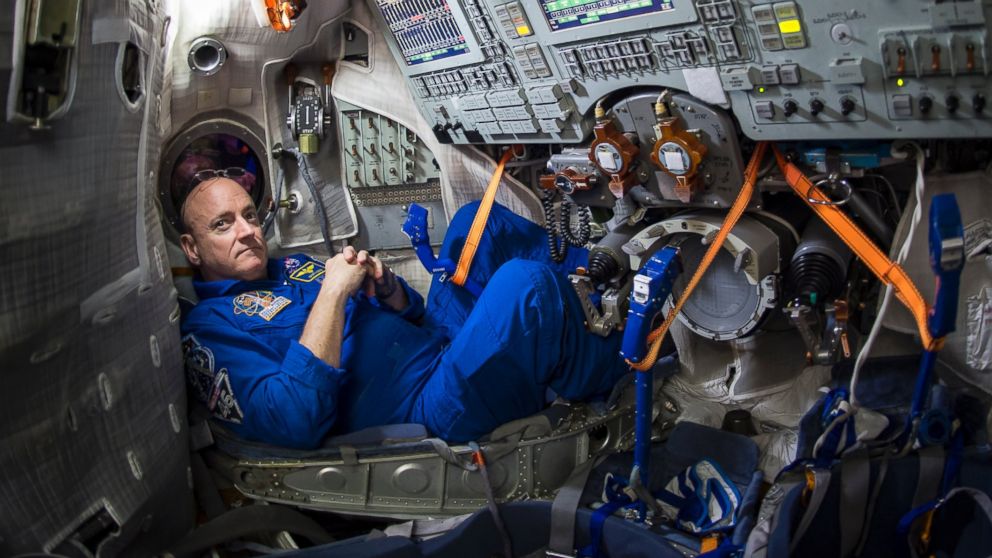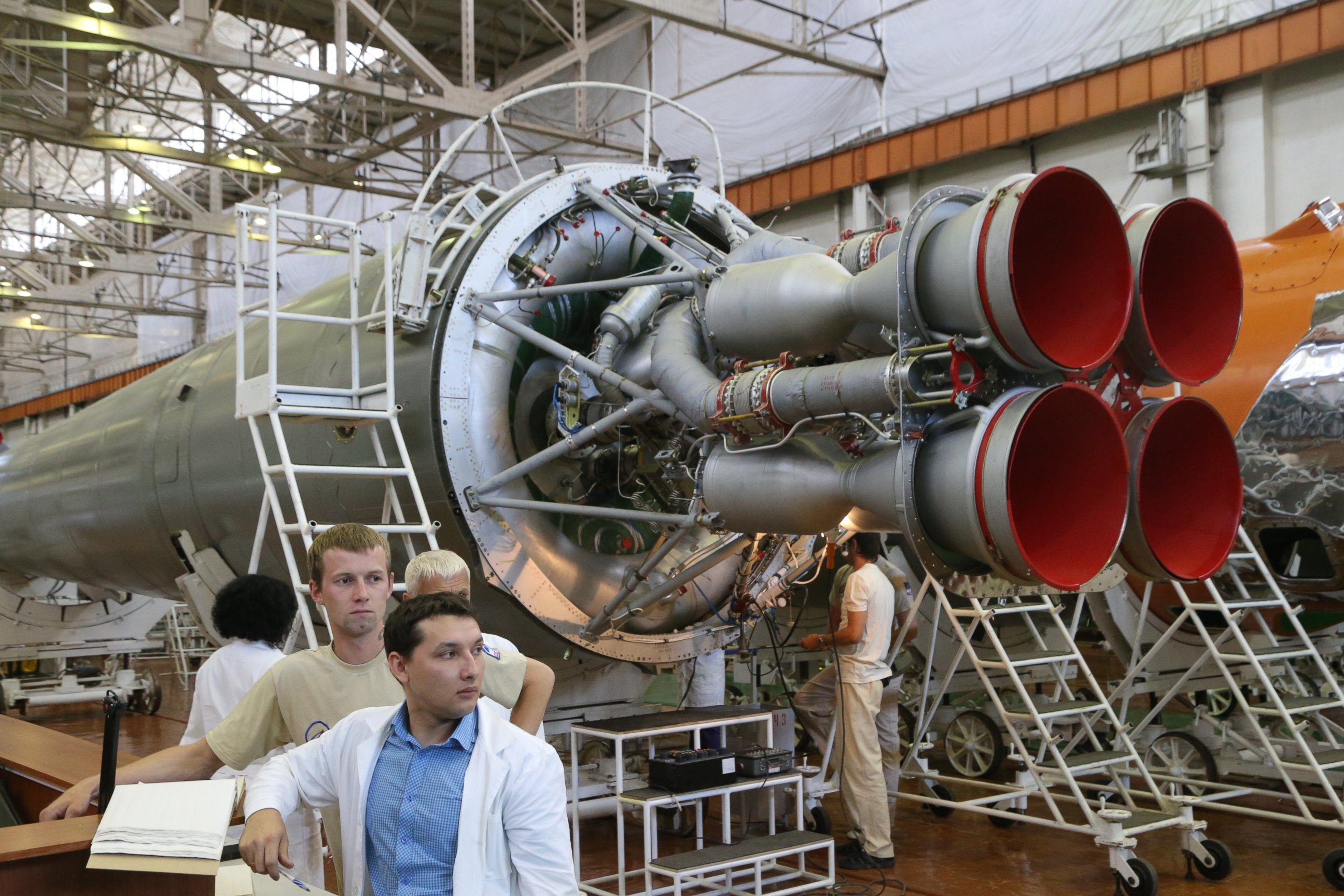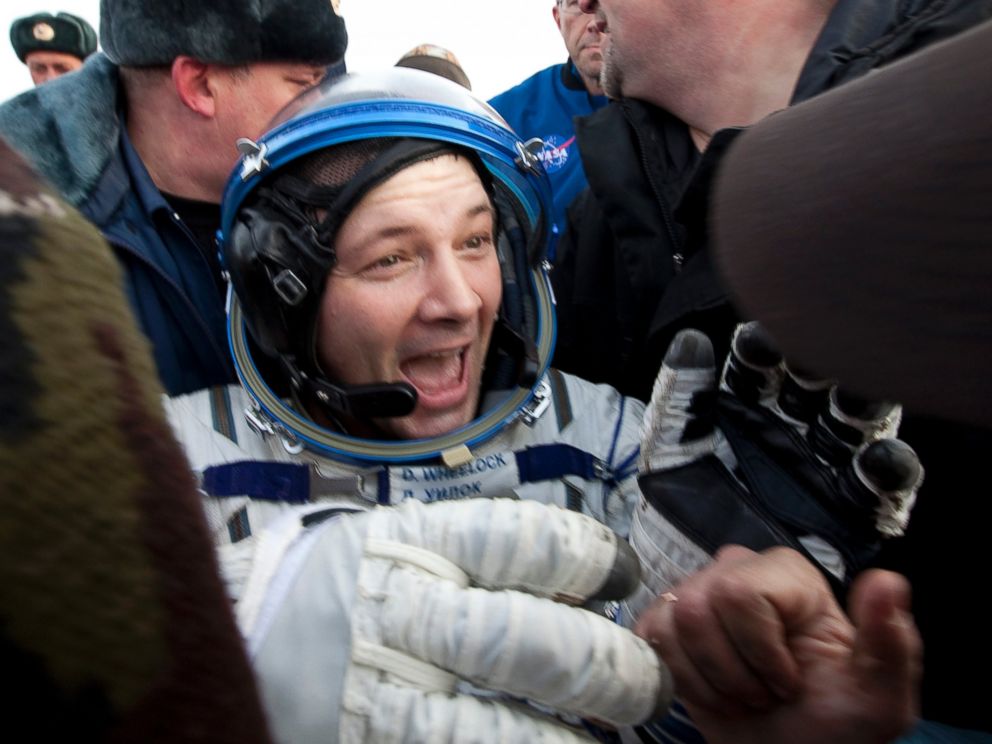What It's Like to Ride Inside Russia's Soyuz Spacecraft
Spacecraft took an American, two Russian cosmonauts back to Earth.

— -- When U.S. astronaut Barry Wilmore stepped inside Russian's cramped Soyuz capsule tonight for his trip back to Earth, he was in for a wild ride.
NASA has been purchasing seats for American astronauts on board the Soyuz since the 2011 retirement of the shuttle program. The agreement helps the United States maintain its presence in space as Boeing and SpaceX work on vehicles expected to be ready near the end of 2017.
Doug Wheelock, an astronaut who has traveled in both the Discovery Space Shuttle and the Soyuz, said the two experiences are notably different.
"It's incredibly bumpy and hot and cramped," Wheelock told ABC News. "It's kind of like going over Niagara Falls in a barrel but the barrel is on fire."
The group began undocking the Soyuz from the International Space Station today at 6:44 p.m. ET and landed in Kazakhstan about 10:07 p.m. While the roughly 249 mile freefall back to Earth took about 45 minutes, the process for making sure they arrived at their destination was far more complex.

The Soyuz stayed close to the ISS for about two revolutions of the Earth as it fired its engines to align with the landing site. The crew members on board the spacecraft then turned their de-orbit engines in the direction of travel and fired them for four to five minutes before falling back to Earth.
"You have a lot of G-forces pushing you down. You're watching parts of your spaceship burn up outside of your window. It’s a little alarming visually," Wheelock said. "And then, of course, the heat shield on the Soyuz is ablative. It melts off and chunks roll off as you're coming through the atmosphere so, consequently, [it] gets thinner and thinner."
The atmosphere helped slow the Soyuz down until parachutes opened and the spacecraft glided to a landing. The three astronauts were inside cramped quarters, bracing themselves for what had the potential to be a jolting return to Earth.

"They train you to keep your hands and arms inside of your body enclosure to make sure you don’t break anything," Wheelock said. "You get as small as you can. When you hit, some people stick the landing. We bounced. We hit again and rolled over. It depends on the winds and things like that."
After landing, it's another 10 to 20 minutes before the Soyuz hatch was opened and the astronauts are pulled out, placed in reclining seats and carried to an area where they typically give their first press briefing.
The astronauts are then taken to a medical tent, Wheelock said, where under professional supervision they can try standing up for the first time in months, a feat that isn't always easy after living in a zero-gravity environment.
"A lot of people feel a tingling in the bottoms of their feet," he said. "The nerve endings in your feet are feeling your body weight for first time in months."




